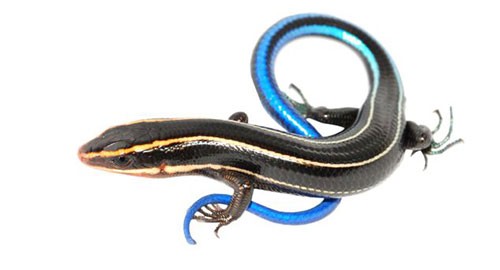Scientists Understand Lizard Regeneration, Sees Human Benefits
| Dino Lirios | | Aug 22, 2014 01:19 PM EDT |
Scientists have taken a major step towards understanding how lizards regenerate their tails. They state that this finding will be beneficial to humans.
Researchers studied the tails of green anole lizards, a species of lizard that detaches its tail when predators are hunting them. Using next-generation molecular and computer analysis tools, they studied about 23,000 genes in chopped up portions of the tail.
Like Us on Facebook
Their research showed that during regeneration, about 326 different genes turned on to activate the regeneration.
This showed that the DNA of lizards has a recipe for regeneration.
While other lizard species also regenerate appendages, the growth of their tails is mostly focused at the tip. During regeneration, lizards like salamanders and tadpoles engage genes in the "Wnt Pathway."
When these genes are activated, stem cells from the brain, hair, and blood vessels are controlled in order to heal the tail.
Dr. Kenro Kasumi, professor in ASU's School of Life Sciences and co-author of the study, was surprised to find that the regeneration process did not begin at the tip of the growing tail.
Instead, the cells divide into distinct pockets like the spinal cord, muscles, skin, and cartilage all throughout the tail.
Then, the cells grew into new tissues and made up several portions of the tail again.
This finding may have significant ramifications for humans because nearly all of the 326 genes can be found within humans as well.
Kusumi said that lizards are very closely related to humans that are capable of healing entire appendages.
Apart from healing tails, the anole lizards also turn on genes involved in embryonic development, response to hormonal signals, and wound healing.
If researchers are successful at replicating the lizard's regeneration process, they can, help treat diseases like arthritis, birth defects, and spinal cord injuries. They can even use the genetic sequence to help humans regrow cartilage.
©2015 Chinatopix All rights reserved. Do not reproduce without permission
EDITOR'S PICKS
-

Did the Trump administration just announce plans for a trade war with ‘hostile’ China and Russia?
-

US Senate passes Taiwan travel bill slammed by China
-

As Yan Sihong’s family grieves, here are other Chinese students who went missing abroad. Some have never been found
-

Beijing blasts Western critics who ‘smear China’ with the term sharp power
-

China Envoy Seeks to Defuse Tensions With U.S. as a Trade War Brews
-

Singapore's Deputy PM Provides Bitcoin Vote of Confidence Amid China's Blanket Bans
-

China warns investors over risks in overseas virtual currency trading
-

Chinese government most trustworthy: survey
-

Kashima Antlers On Course For Back-To-Back Titles
MOST POPULAR
LATEST NEWS
Zhou Yongkang: China's Former Security Chief Sentenced to Life in Prison

China's former Chief of the Ministry of Public Security, Zhou Yongkang, has been given a life sentence after he was found guilty of abusing his office, bribery and deliberately ... Full Article
TRENDING STORY

China Pork Prices Expected to Stabilize As The Supplies Recover

Elephone P9000 Smartphone is now on Sale on Amazon India

There's a Big Chance Cliffhangers Won't Still Be Resolved When Grey's Anatomy Season 13 Returns

Supreme Court Ruled on Samsung vs Apple Dispute for Patent Infringement

Microsoft Surface Pro 5 Rumors and Release Date: What is the Latest?










